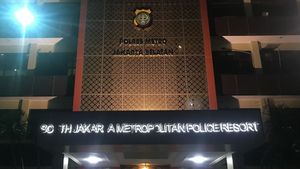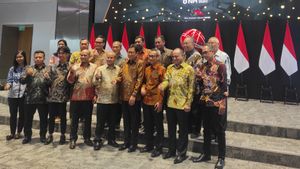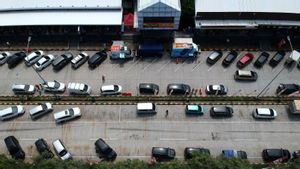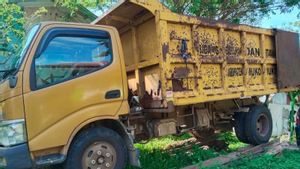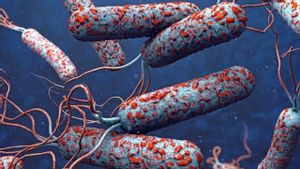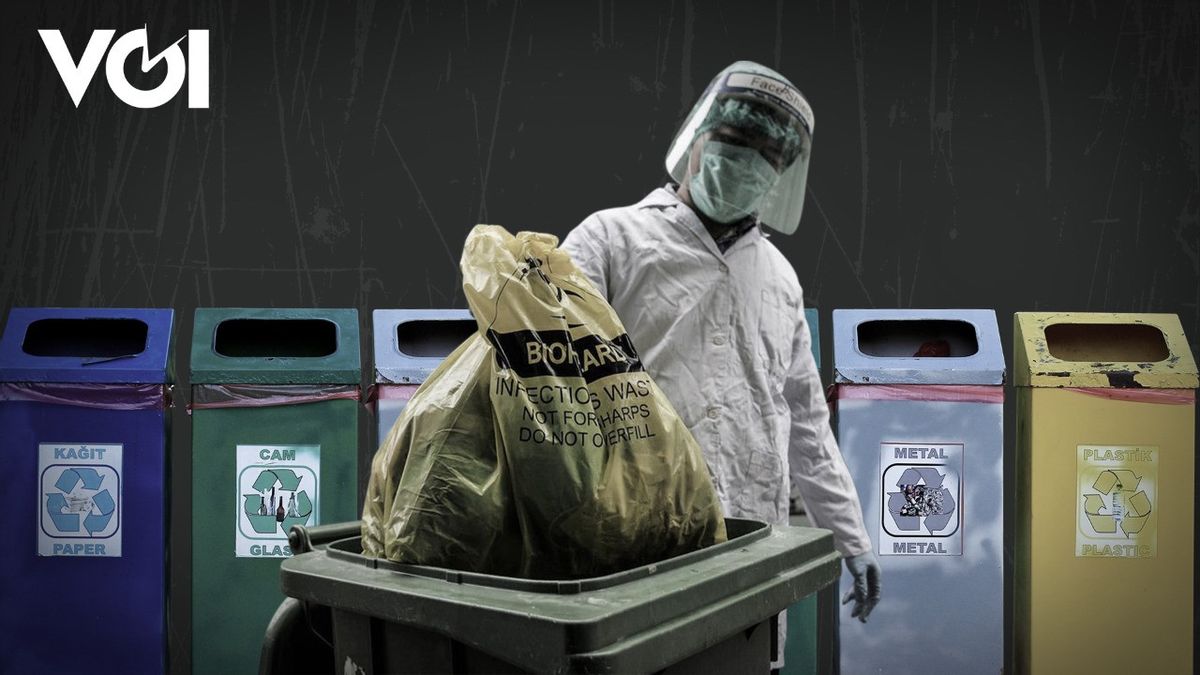
Previously, through "The Disaster of Infectious Medical Waste: A New Burden of the COVID-19 Pandemic Problem" we have seen the dangers of infectious medical waste. Still part of VOI's signature series, "Medical Waste Critical", let us now realize how chaotic waste management is starting from the immediate environment.
Sorting waste by type has not become a habit of Indonesian society. Even though in the midst of this COVID-19 pandemic, the management of infectious medical waste that we use everyday such as masks must be taken seriously. The threat to health is no joke. The government has actually established procedures to deal with this problem. But like most of the problems that exist in this country: practice is often saggy.
We surveyed the habit of sorting to the nearest environment. At our house, in Babakan Village RW 8 Bogor Regency, sorting waste is still considered taboo.
One of our neighbors, Mulyana, admitted that he mixed all his domestic waste. "In one bucket all, used cooking trash, plastic waste too. When it's full, just throw it into a shelter," he said when we asked him.
Mulyana did not know, if it turned out that trash classified as dangerous, such as masks, had to be treated specifically. "I don't know. Use a disposable mask too, at most if you go outside."
Meanwhile Yopi, who lives not far from Mulyana's house, had a similar answer when we asked him about the sorting of infectious waste. "Don't think about it. Just throw it away. It's good to separate the garbage." he said.
Mulyana and Yovie are only two of the 750 residents of RW 8 Babakan Village, most of whom are still unfamiliar with sorting toxic and hazardous waste (B3). Even though during this pandemic, infectious medical waste as we explained in the previous article was so dangerous for health if it was not managed properly.
In our own village, according to the head of Posyandu Asoka, Rosdiana, there are not no COVID-19 patients. At least according to Rosdiana, 23 people have been infected with the new corona virus. "One person who died," he told VOI.
About the medical waste management procedure, fortunately the Posyandu that Rosdiana manages is still running. He explained that all medical waste, such as masks, PPE, and other medical devices, were collected in a safety box.
"After they are collected, officers will take them to the Puskesmas in Cangkurawok. Later they will be sorted and burned there. The point is, don't misuse this waste," explained Rosdiana.
This of course does not apply to the general public. "If most of the residents are like that, just throw it in ordinary trash cans," said Rosdiana.
From Bogor, we now move to Jakarta. We interviewed one of the heads of RW 014 Kalideres, West Jakarta, Dede Setiawan about domestic waste management. According to him, there is no special treatment to sort infectious waste such as masks.
The garbage disposal system in the complex that Dede leads is to dispatch officers to collect garbage from each house. "Throwed into the cleaning (officers) all over."
The number of residents that Dede leads is not small, namely around 2,200 people. It is difficult to imagine if 50 percent of the population uses disposable masks, which means that there are 1,100 masks that are collected every day in the complex landfill (TPA).
That's just one day, how about counting it since the beginning of the pandemic which has been almost a year in Indonesia. The amount collected could reach 13,200 mask waste.
The amount of infectious medical waste that is not properly managed is increasingly difficult to calculate if we look at it at a macro level. Because according to various surveys, the majority of Indonesians have not implemented the habit of sorting waste properly.

The 2017 Socio-Economic Survey (Susenas) published by the Central Statistics Agency, for example, revealed that 66.8 percent of Indonesians still choose to burn their household waste without sorting it first. This causes B3 waste to burn along with other wastes.
Meanwhile, the Katadata Insight Center (KIC) Survey noted that 50.8 percent of Indonesians do not sort waste. The reason is that 79 percent of them are reluctant to sort their waste because they don't want to be bothered.
In the survey which was held in six major cities in Indonesia in 2019, there are indeed a lot of people sorting waste. However, 77.60 percent only sort waste according to two categories.
In fact, according to the Ministry of Environment, ideally waste should be separated into five categories. Among others, B3 waste, biodegradable waste, reusable waste, recyclable waste, and other waste that does not fall into the four categories.

The procedure for treating COVID-19 infectious medical waste is actually regulated in the Minister of Environment and Forestry Letter 167/2020 (MENLHK Letter 167/2020) and Ministry of Environment and Forestry Circular Letter Number 2 of 2020 (SE MENLHK 2/2020). The regulation also specifically differentiates how to manage infectious waste originating from health care facilities (fasyankes) and those from households.
As summarized from Hukum Online, the technical handling of COVID-19 medical waste includes:
a. Identification, sorting and containerization:
Each waste generator is required to identify all the waste it produces. Sorting and packaging LB3 based on infectious and pathological characters. Expired chemicals and pharmaceuticals, spills or packaging residue.b. Waste Storage:
Storage is carried out according to character and packaging. Especially for infectious waste, it is stored for a maximum of 2 days until it is destroyed at room temperature or 90 days until it is destroyed when the temperature is 0 ° C.c. Destruction:
Destruction by burning uses an incinerator operated by a health service facility (fasyankes) or a licensed medical waste processing service provider. The incinerator has a combustion chamber with a minimum temperature of 800 ° C.Furthermore, SE MENLHK 2/2020 also outlines the handling of infectious waste and household waste handling COVID-19. The procedure for infectious waste originating from health facilities must be stored in closed packages for a maximum of two days from the time it is produced. Then, the waste is transported and destroyed using an incinerator with a minimum temperature of 800 degrees Celsius or by chopping it with an autoclave.
Meanwhile, infectious waste from households where people are under surveillance for COVID-19, pack the waste themselves in closed containers. And the container should be labeled "infectious waste."
Then. The ODP person must transport and deliver the waste at the B3 waste collection point. Only then will officials from the agency responsible for the environment, hygiene and health sector pick them up at that point to be transported to the collection location before being handed over to the B3 waste processor.
Not only that, the regulation also calls on people who use disposable masks to tear, cut or cut masks and pack them in plastic before throwing them into the trash. Meanwhile, as written in the regulation, local governments are required to prepare special mask bins in public spaces.
Practical nothingIn practice, the Ministry of Environment and Forestry's appeal regarding waste management looks like a formality. From what is most visible, there are no special mask bins at all in the places we surveyed, namely RW 8 Babakan Village, Bogor or RW 014 Kalideres, West Jakarta. Moreover, the question of sorting out really infectious waste is still minimal.
Researcher at the Center for Oceanographic Research at LIPI, M Reza Cordova, said that public awareness about sorting waste is indeed complex. According to LIPI's research, in general, only one out of two people are willing to sort waste.
For this reason, government support for better waste management is very important. "In this case, it is very important for better management," said Reza when interviewed by VOI.
Empty PPE trash bins, such as what happened in Bogor and West Jakarta, should have been fixed immediately. The distribution of the dropbox should be reproduced.
"For example, having a lot of PPE garbage dropboxes in public places such as in Banjarmasin. Or like in DKI which picks up PPE garbage balls at the sub-district / urban level," said Reza.
Then regarding the collection of COVID-19 waste, Reza said this depends on the budget from the local government. "If the budget is big like Surabaya, Jakarta should be able to manage its waste better."

In the case of infectious waste from people who carry out independent isolation, said Reza, we never know whether the facts are actually being managed or not. "For example, the neighbors who live in one of my houses, no one does the sorting. And that also happens in many ways."
This problem was also agreed upon when Reza met with the COVID-19 task force. "They said the same thing. This must be proactive from us."
Meanwhile, the Ministry of Environment and Forestry and the National Disaster Management Agency (BNPB) are not ignorant. However, according to Reza, this problem returns to the environmental service, and they rely on this problem again to third parties.
"From the three parties themselves, in Indonesia there are only 21 companies. Those are concentrated on the island of Java," said Reza.
The problem is even more complicated outside Java Island. Because the infectious waste management chain is even longer.
"The COVID-19 Task Force also stated that those in Papua would be troublesome, from Papua to Makassar, then to Java. So if that happens we never know whether it was really brought to Java or maybe it was thrown into the sea. lots of questions, "said Reza.
Even though managing this infectious medical waste, said Reza, cannot be done carelessly. Because the possibility of being exposed to the virus from the waste of COVID-19 patients is quite high.
"This waste is a lot, especially if the isoman is thrown away, he doesn't know where. What is clear is that the pressure on the environment will be even higher," he concluded.
Follow This Issue Series Writing: Critical Medical Waste
The English, Chinese, Japanese, Arabic, and French versions are automatically generated by the AI. So there may still be inaccuracies in translating, please always see Indonesian as our main language. (system supported by DigitalSiber.id)






